An outstanding lens.
My first experience with the LX100 is here.
Since then I have looked through the menu options more carefully and found some very handy things, and one disappointment.
The handy things include one setting to turn off all sounds – the focus beep and the shutter ‘clack’ – switching to the silent electronic shutter, the street snapper’s favorite. Another is the ability to set the lens so that it extends to a favorite focal length when the camera is turned on. The default is 24mm; I have it set to 35mm where it takes maybe an additional 0.5 second to extend compared with the 1.0 second for the default. No big deal.
One feature which really got me excited is the ability to change the function of the focus collar on the lens. There are several options but the most useful is to make it into a zoom ring, rather than using the small control concentric with the shutter release. Nice idea, Panny, but horribly implemented. You really want the focal length range (24-75mm) to be spanned in at most a quarter turn of the ring, maybe one eighth, but in practice it’s very low geared needing over 360 degrees to go through the range. Useless. Still, the shutter button control is fine and in practice it jumps between the most common settings – 24, 28, 35, 50, 70 and 75mm – and does so quickly. (Non-stepped focal length selection is also an option). Maybe Panny can fix the collar ‘gearing’ in a firmware upgrade?
The other finding, if hardly a disappointment, is that for critical focus the default multi-area focusing is also useless. But I have found this to be the case on every camera I have used with this dumb feature. It bears repeating the question. How can the camera know what the critical point of focus is?
Let me illustrate. Here’s my son at lunch the other day.
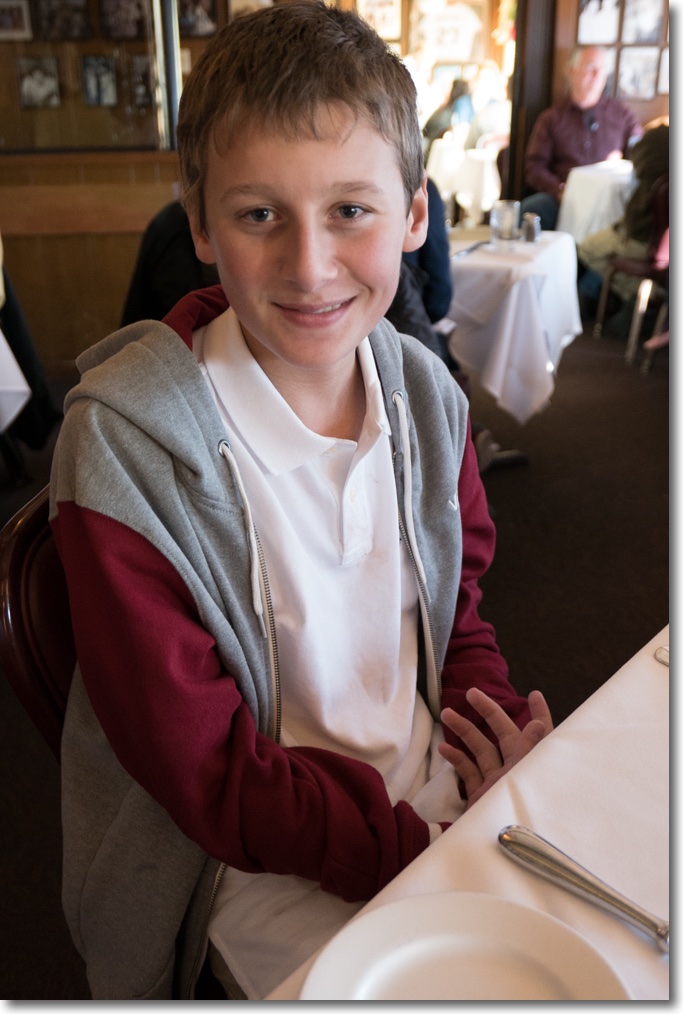
LX100, 35mm, 1/80, f/2.4 ISO1250.
Lovely lighting and note how the fast lens throws the background out of focus. This was taken using the multi-area focusing. Now zoom in and you get:

Unsharp Winston.
The point of critical focus selected by the multi-area technology, and it is very sharp indeed, is three inches behind my son’s eyes. So the first thing to do is to turn off this solution looking for a problem and set the body for single area central focus, using ‘focus and recompose’ with a first pressure on the shutter release to lock in correct focus, where it works as perfectly as on every previous Panny MFT body I have used.
Now here’s the real shocker. Long time readers know I favor a GX7 with the 17mm f/1.8 Olympus MFT Zuiko most of the time, with a second GX7 body with the 45mm f/1.8 Zuiko MFT in a shoulder bag for the occasional close-up. Given that I favor the (17)/35mm lens, it made sense to do a comparison under controlled conditions to confirm what I suspected. And that is that the Leica optic on the LX100 yields nothing to the outstanding Olympus 17mm lens. Using a bookshelf at home here are the comparisons. The GX7 is at the left in all these examples and no processing or sharpening of any kind was applied in these RAW images, shown in LR5.
Center at f/2, f/2.8 and f/4:
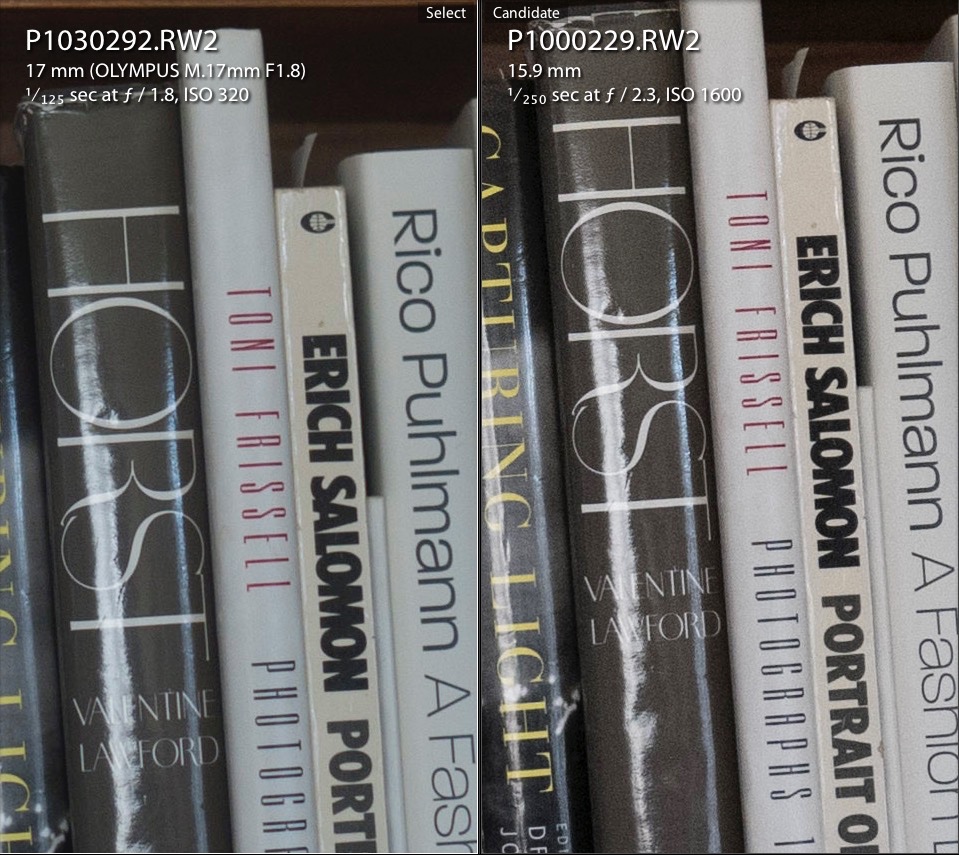
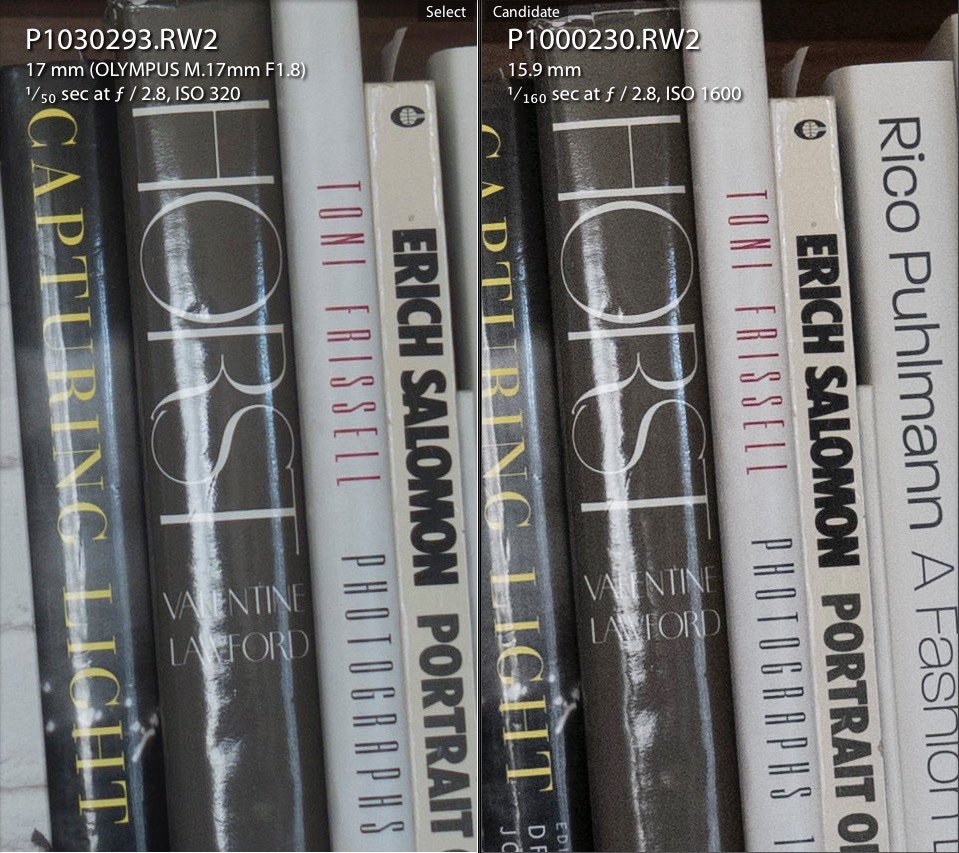
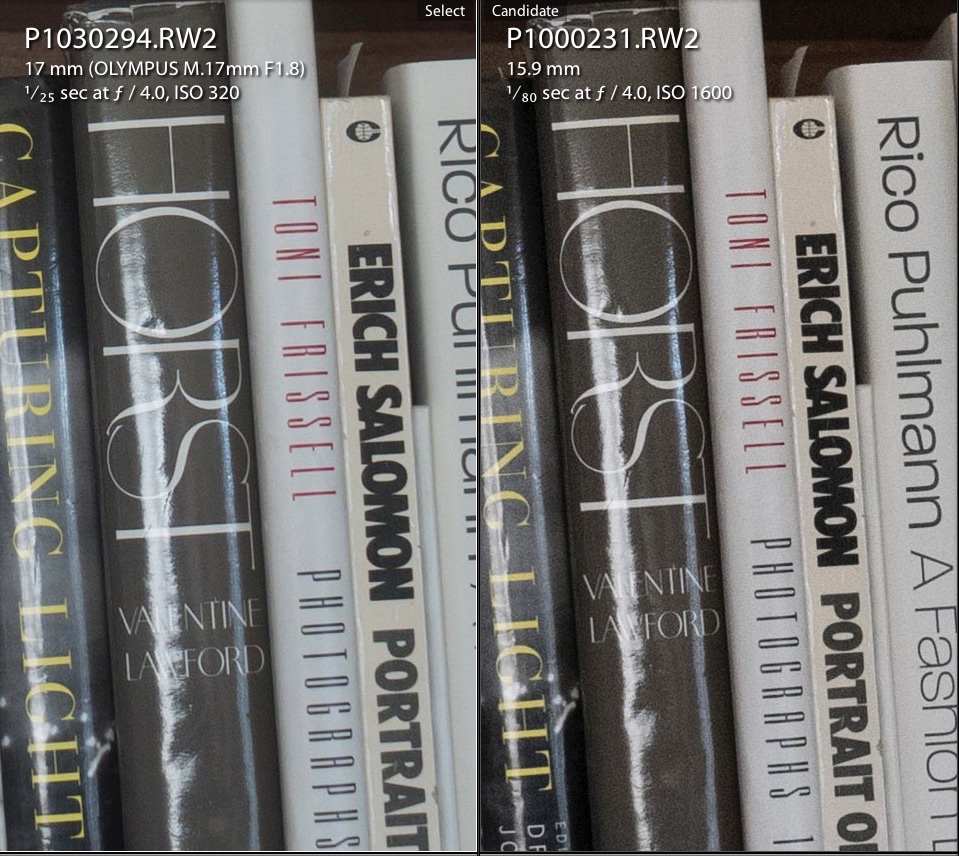
Corner at f/2, f/2.8 and f/4:


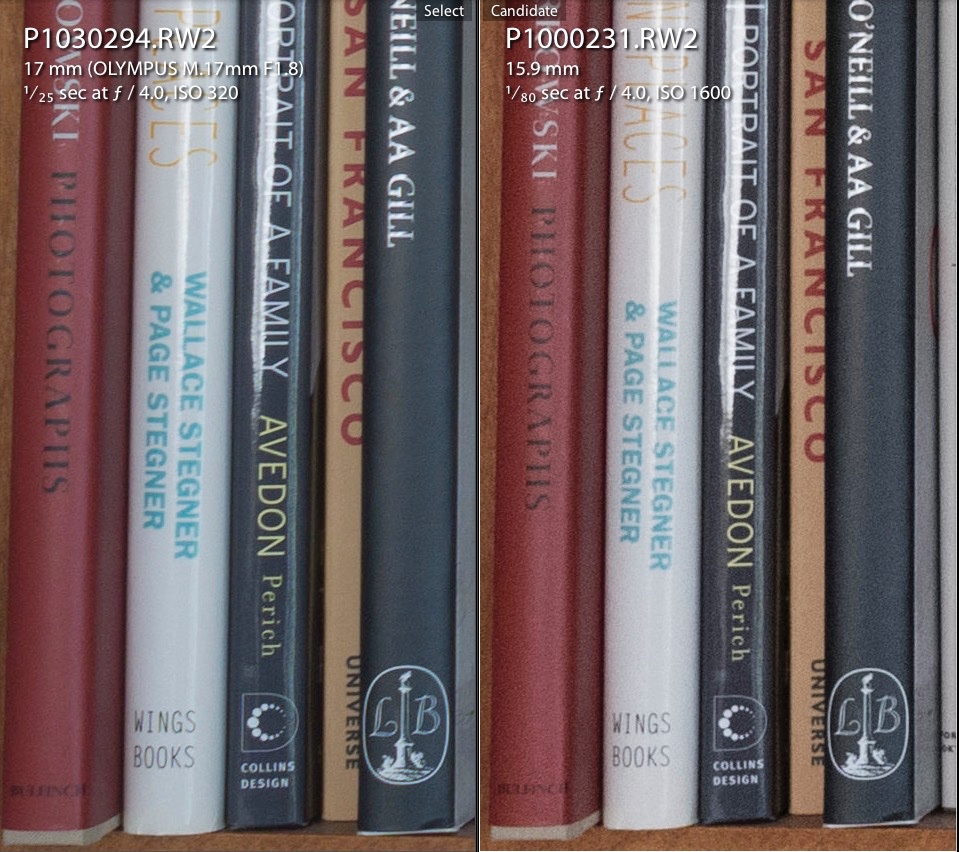
The 35mm setting on the LX100 comes with a maximum aperture of f/2.3 against the Zuiko’s f/1.8, an immaterial 0.5 stop difference.
Overall the Leica zoom on the LX100 is marginally better at all stops in the center, the Oly Zuiko marginally better in the corner, but as you can see from the above sections of what would be 30″ x 20″ prints, the differences are vanishingly small. I used 1600ISO for the LX100 snaps (by mistake) and the absence of grain and noise is remarkable. The cameras were on a very sturdy tripod, the vibrationless electronic shutter was used, and the shutter was released with the self timer to make sure all was still. Central area, single point AF was used for all images.
The different baseplate design of the LX100 means that you will be unable to open the battery/SDHC card door with even the smallest of Arca tripod plates fitted. It has to be removed if either is to be swapped. The GX7 has an angled door which clears the plate.
So if the 24-75mm zoom range solves for you, there is little justification in buying a body with interchangeable lenses with all the futzing around and dirt issues that entails. The LX100 has all you need with a lens that matches the best fixed focus optics available for the MFT format, is a very wide 24mm at its widest setting and the whole package can just be squeezed into a generously sized pocket with the lens collapsed.
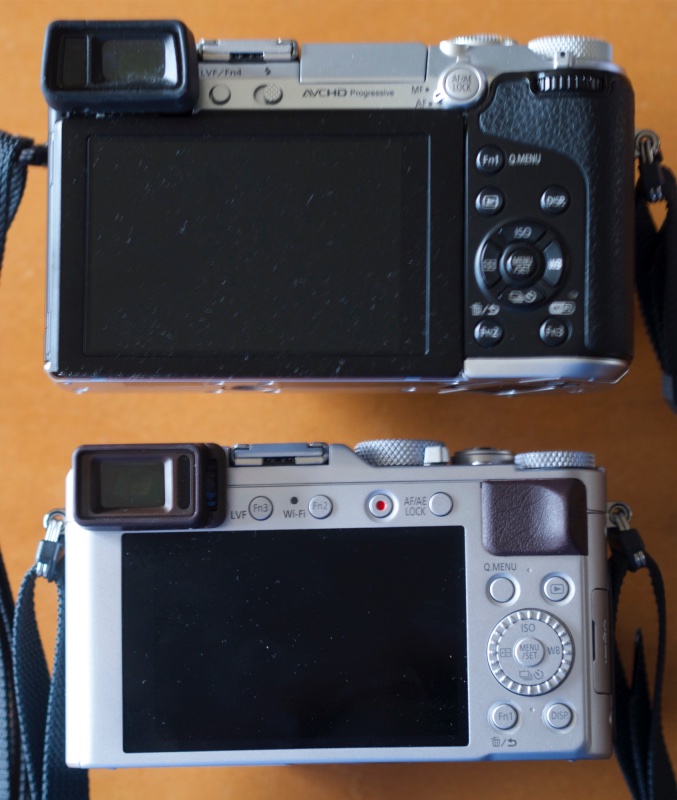
Though smaller than the GX7, the LX100 (lower) has superior ergonomics owing
to the plethora of manual controls and the extended thumb grip on the rear.
The serrated dial at lower right is also a rotary control.
The modern Leica is here, and it’s made by Panasonic.
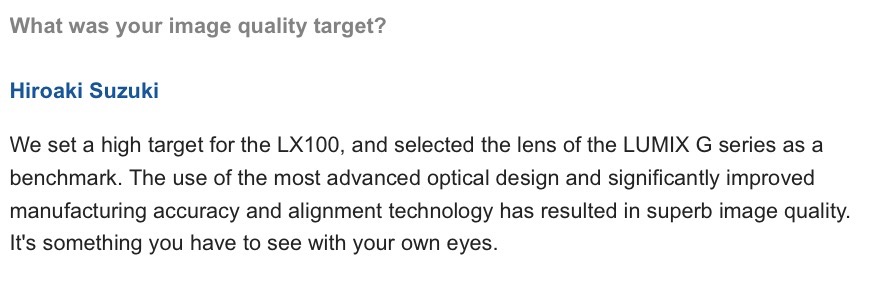
Indeed. This is true.